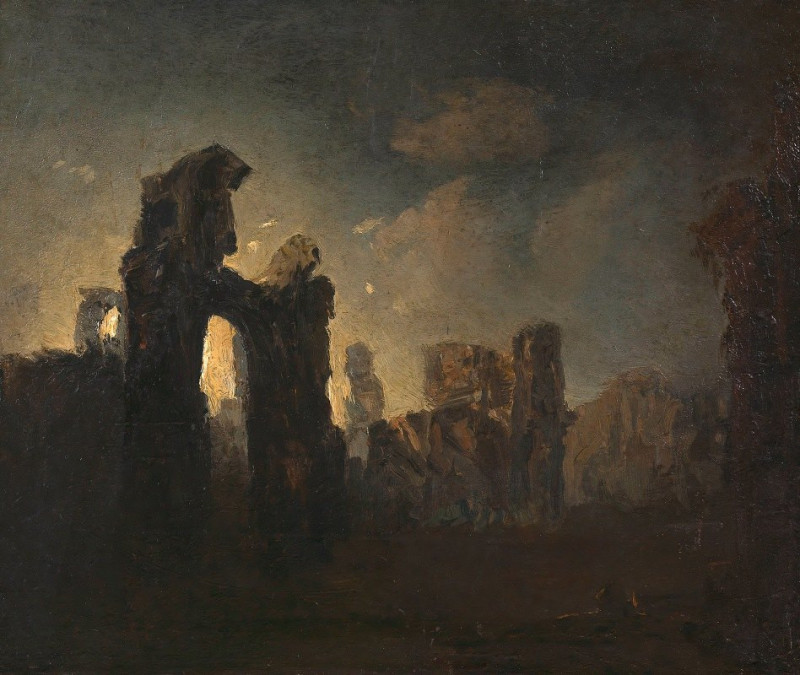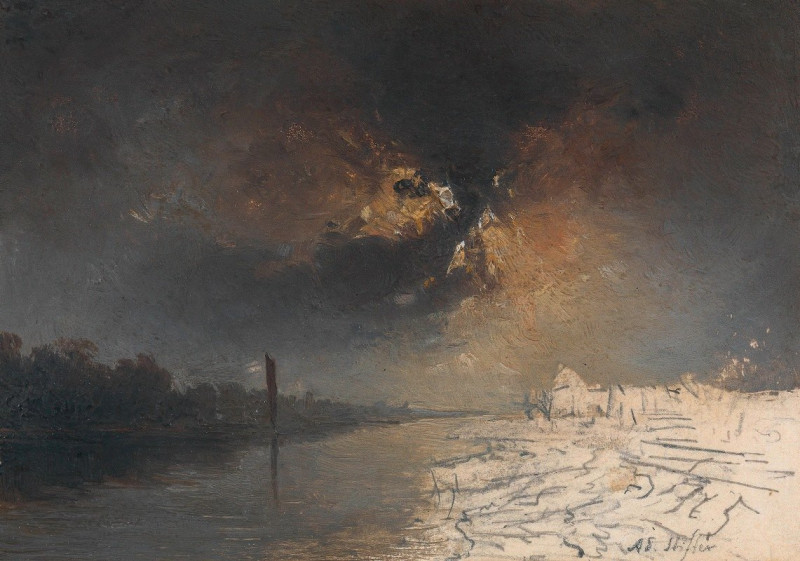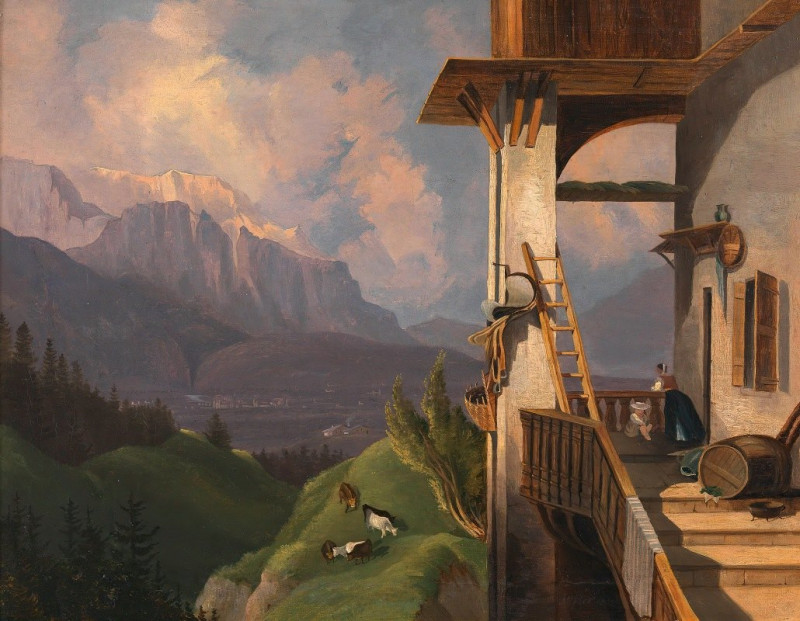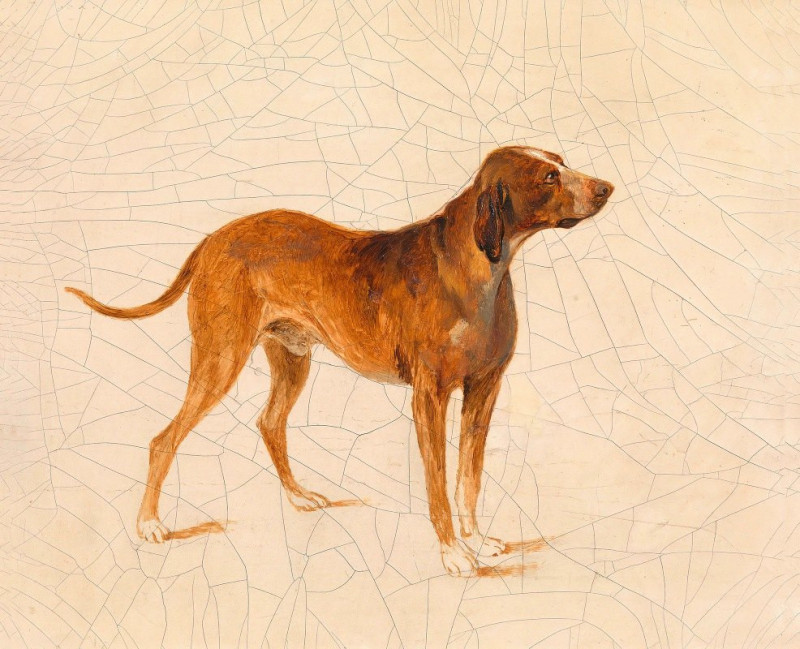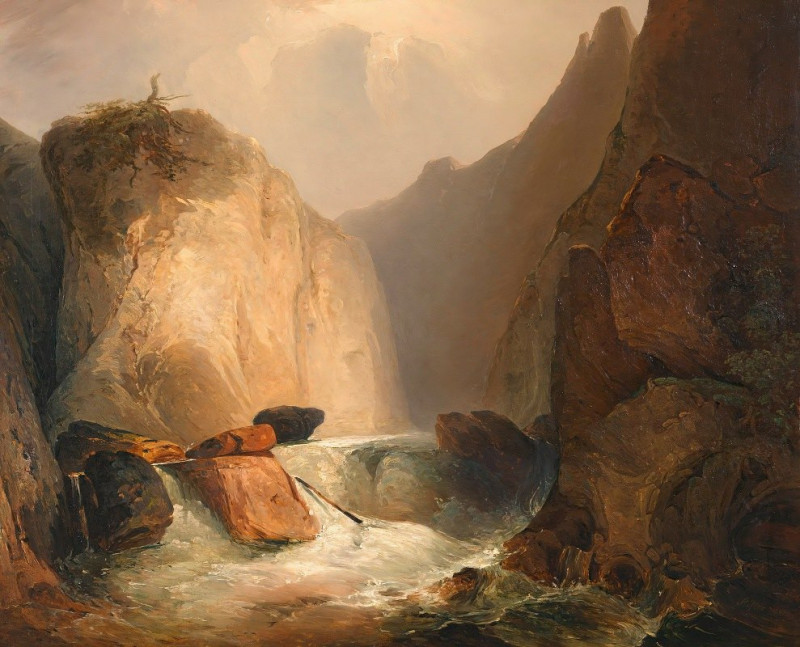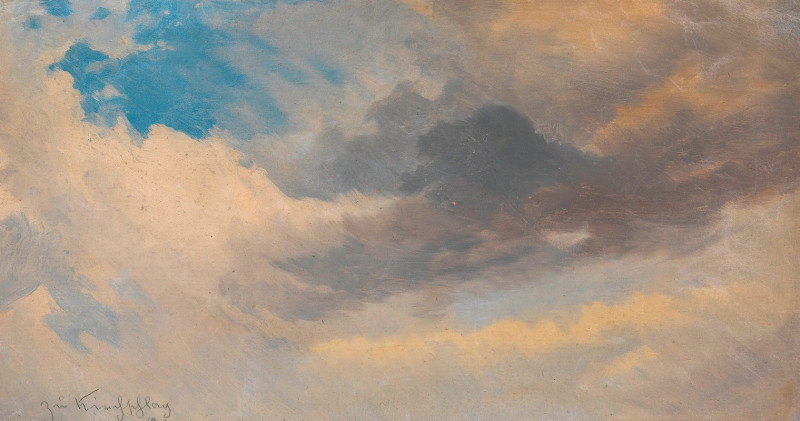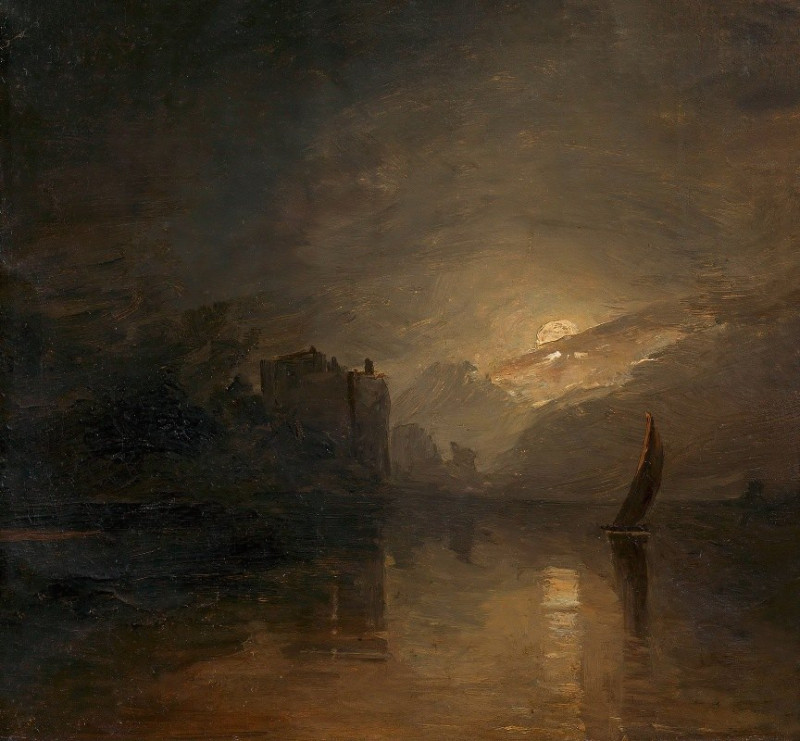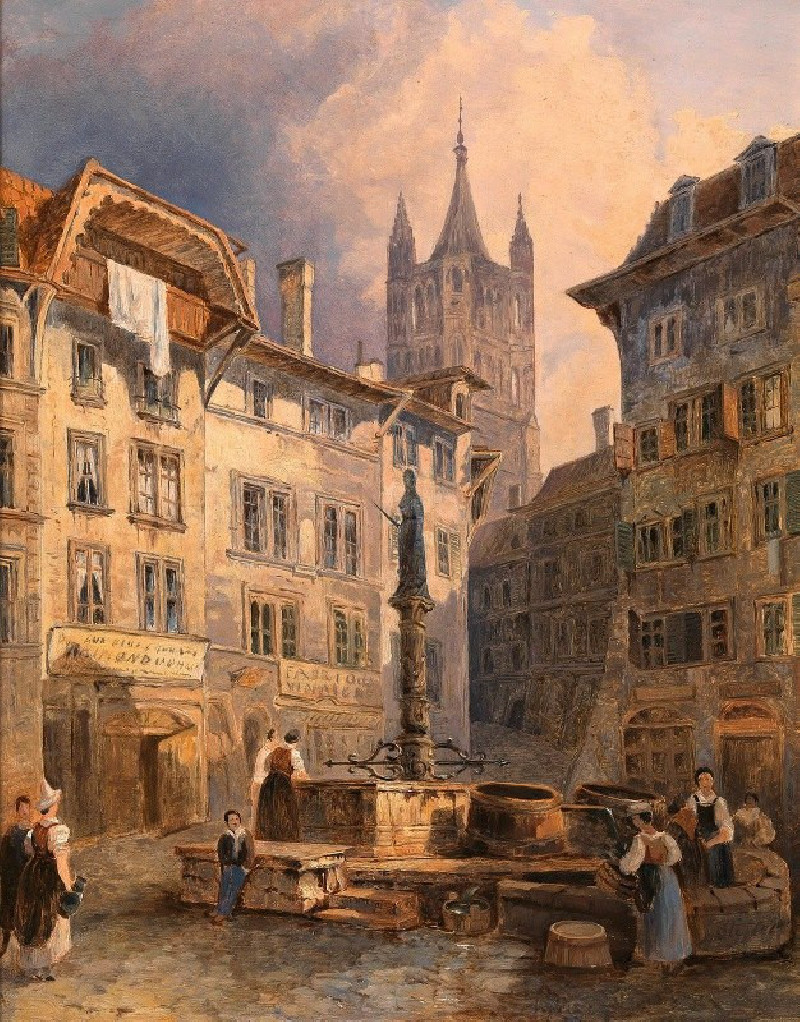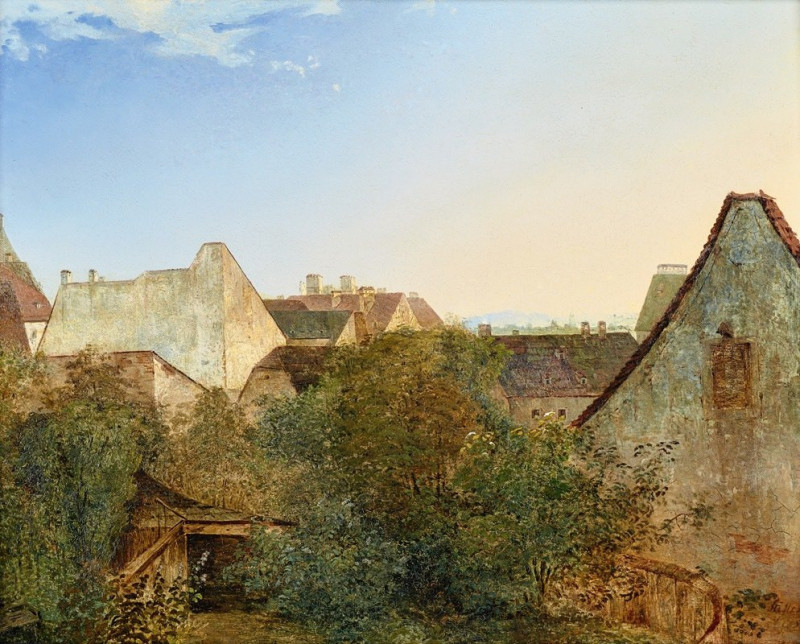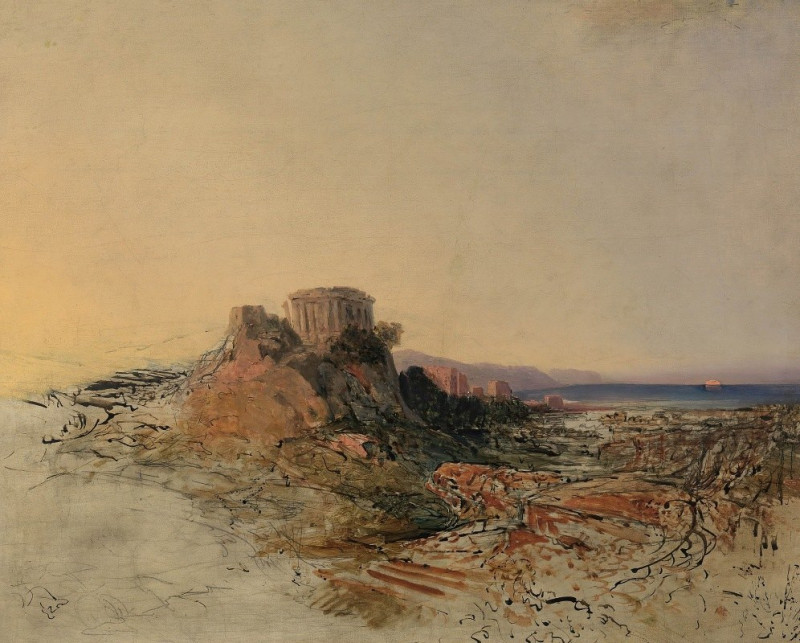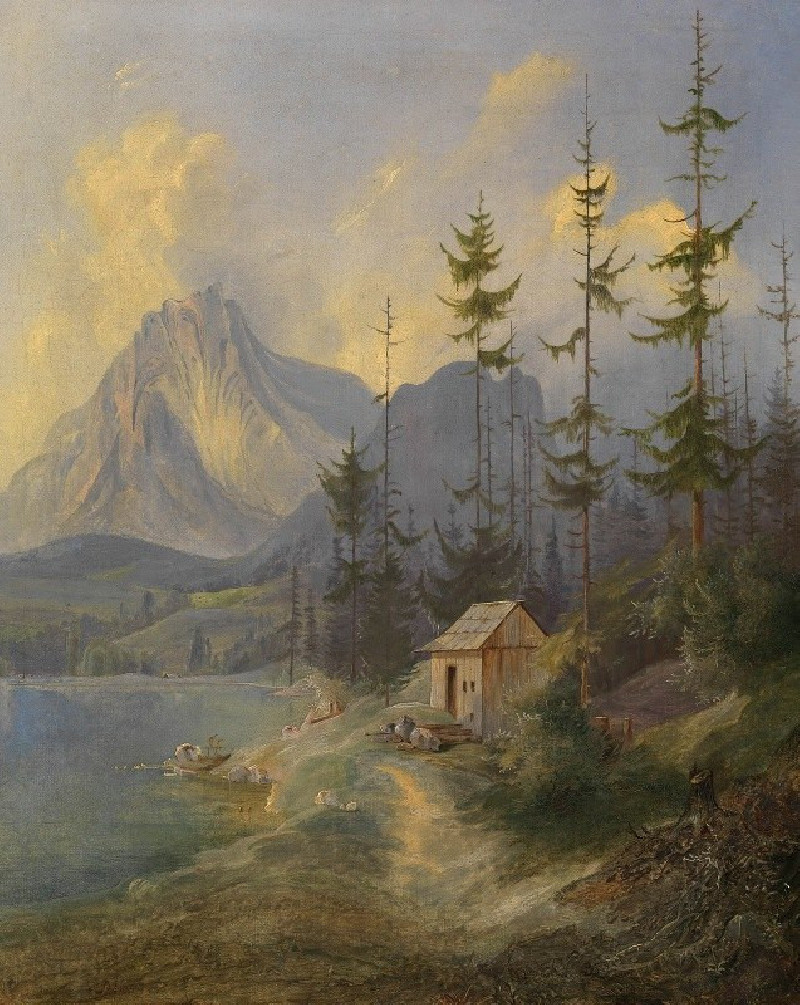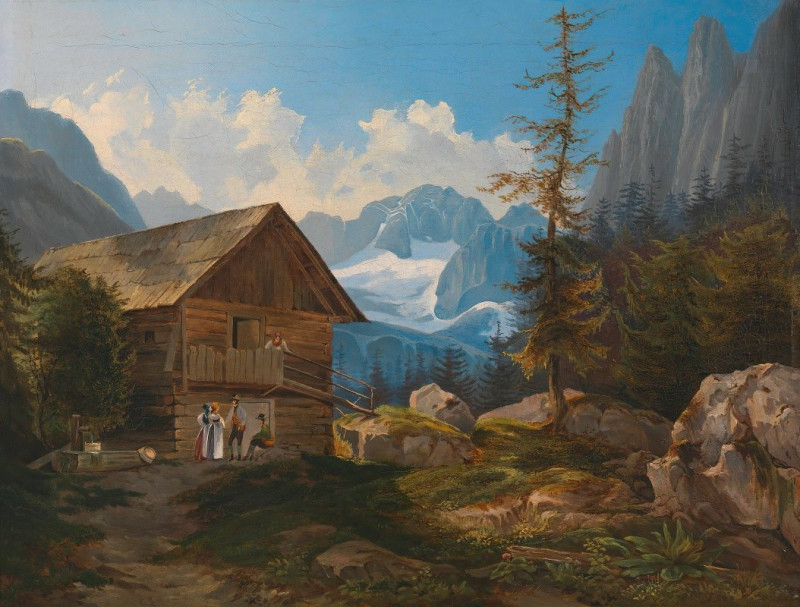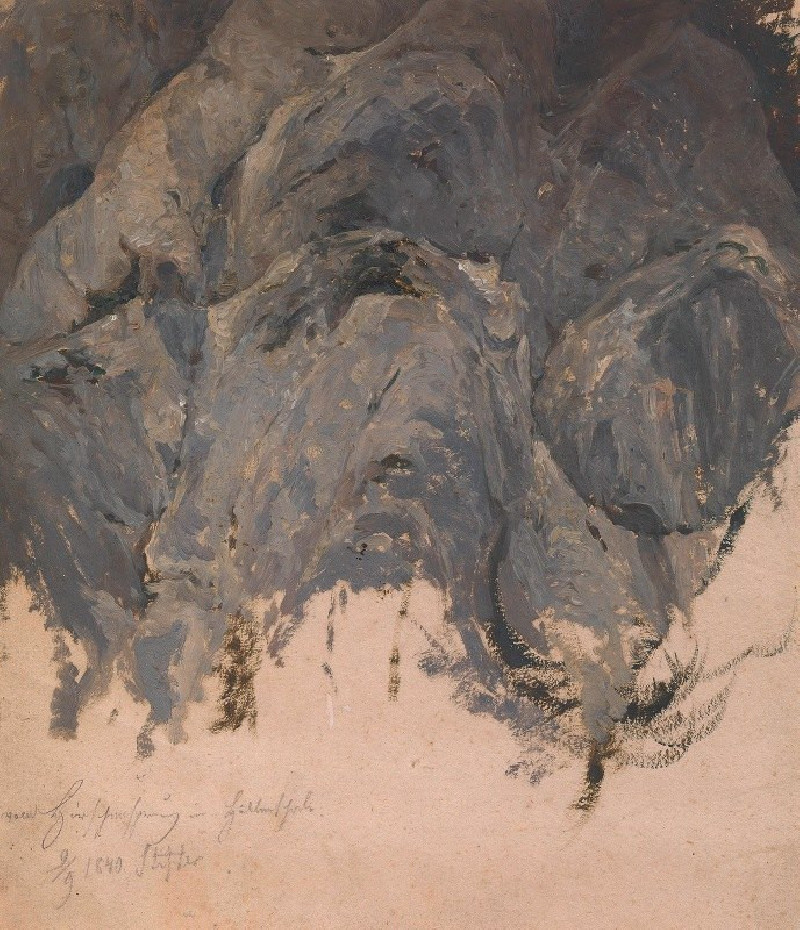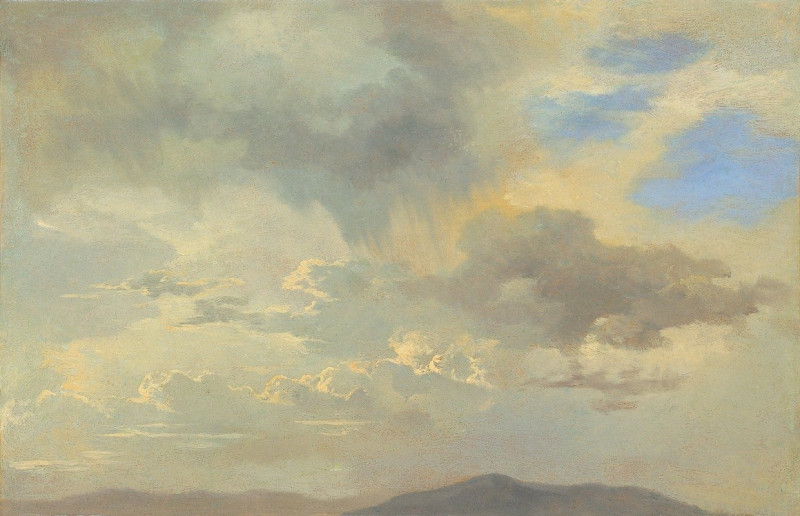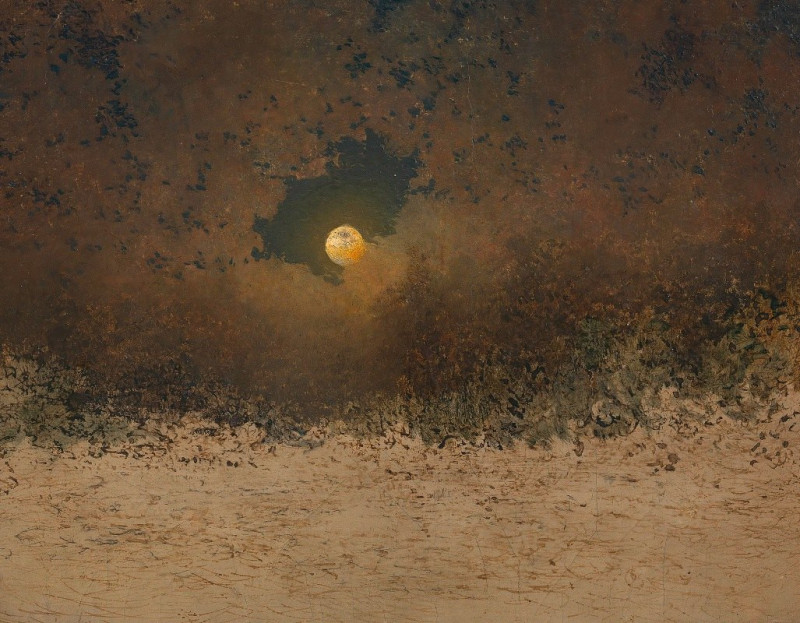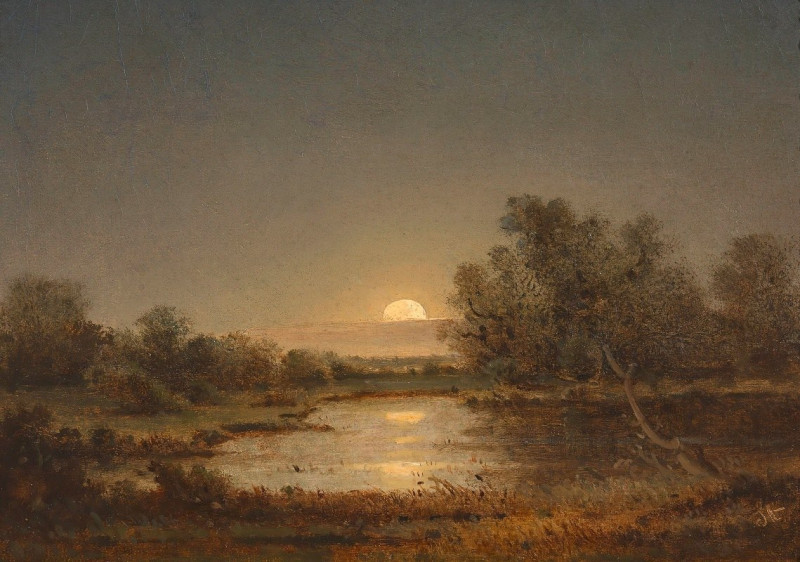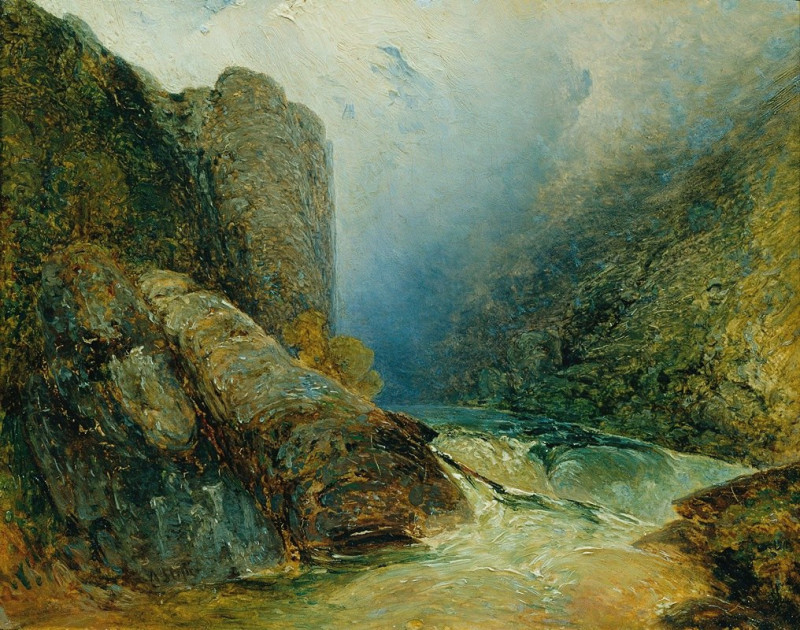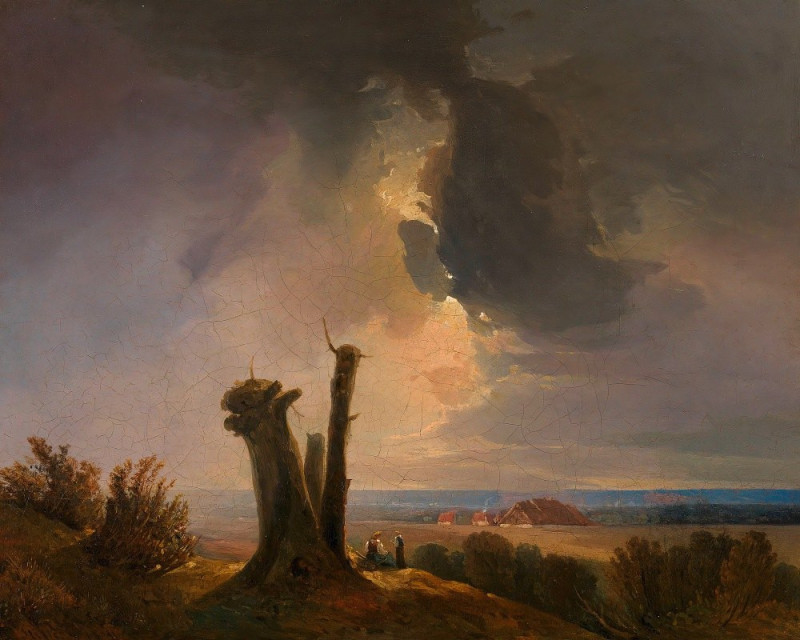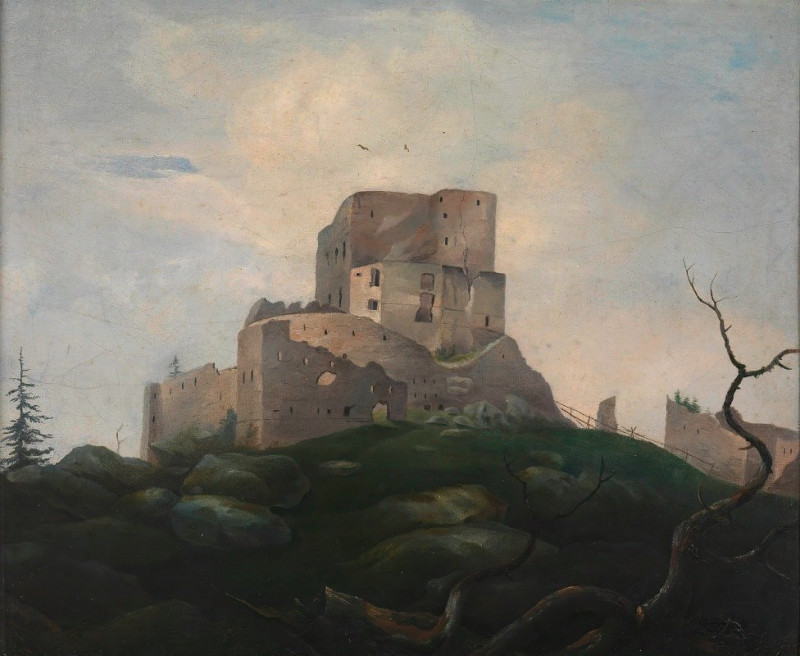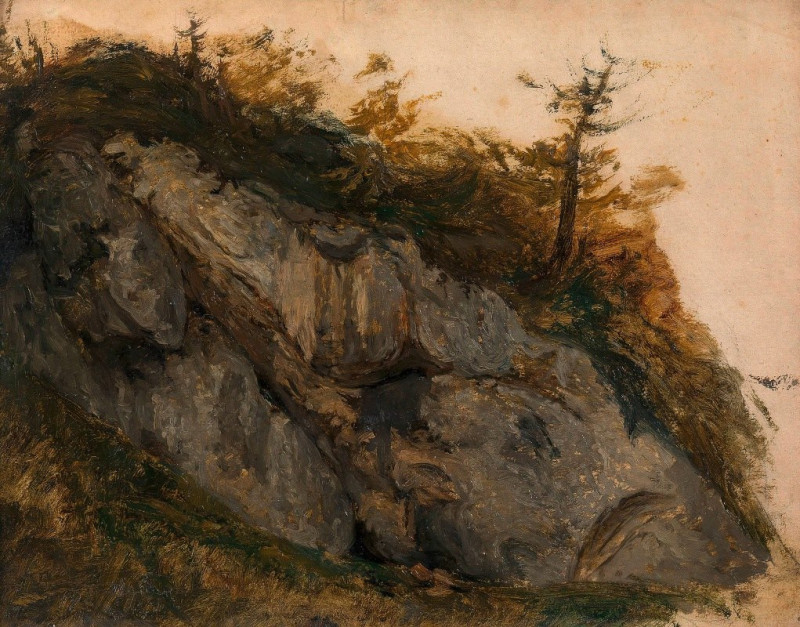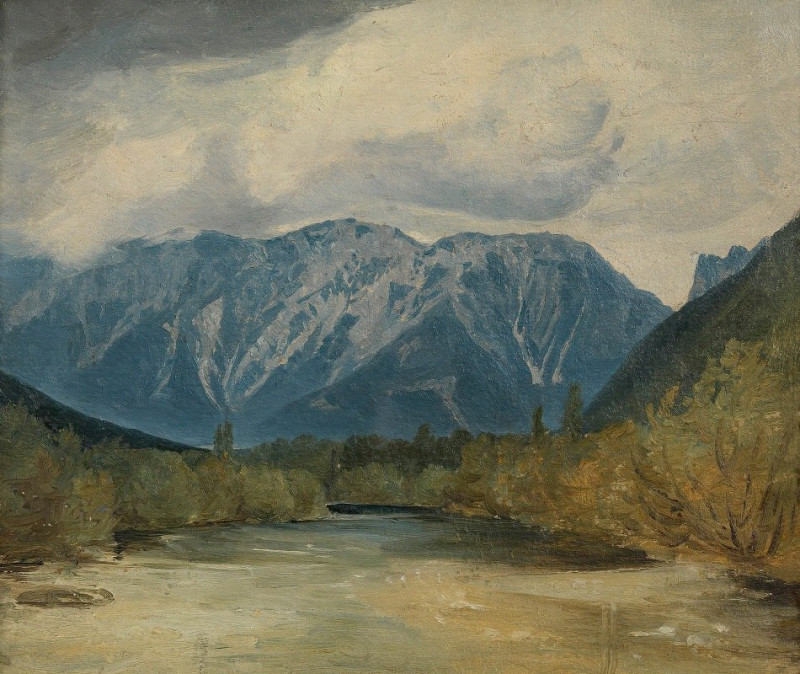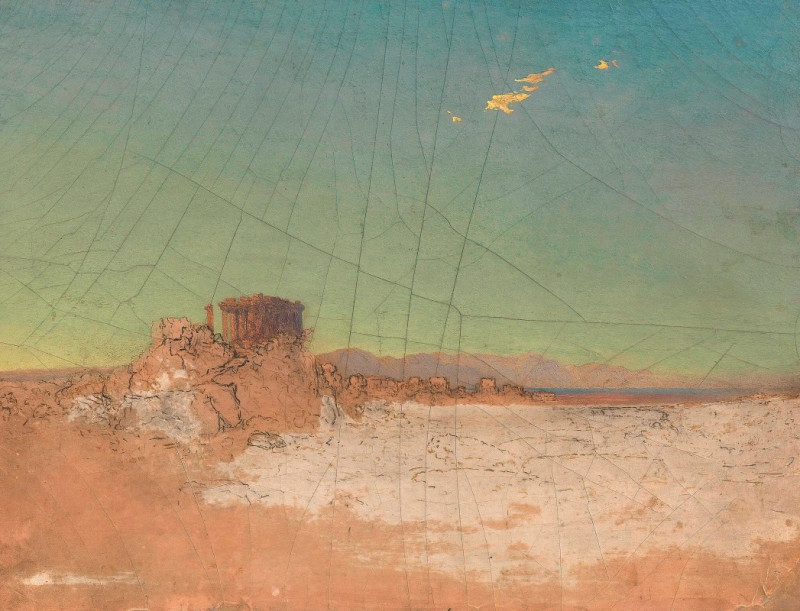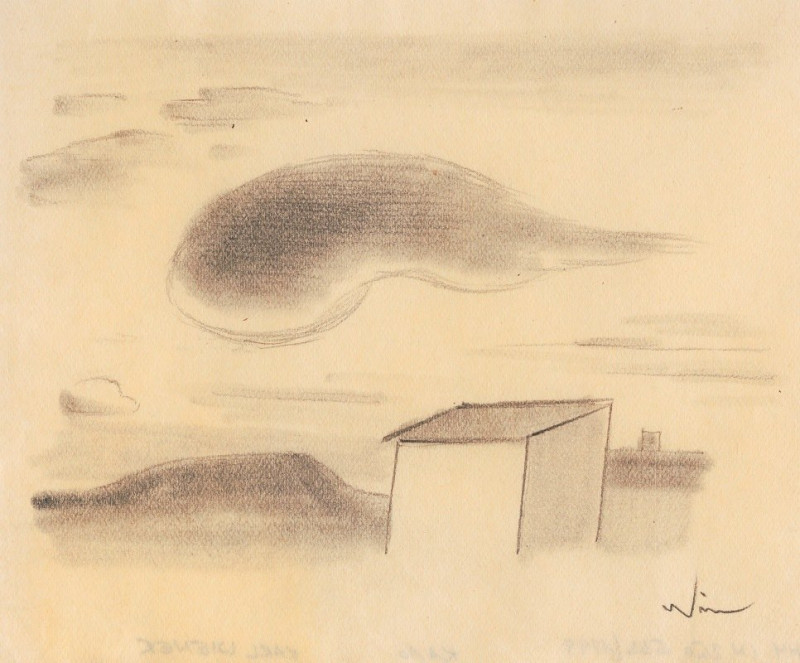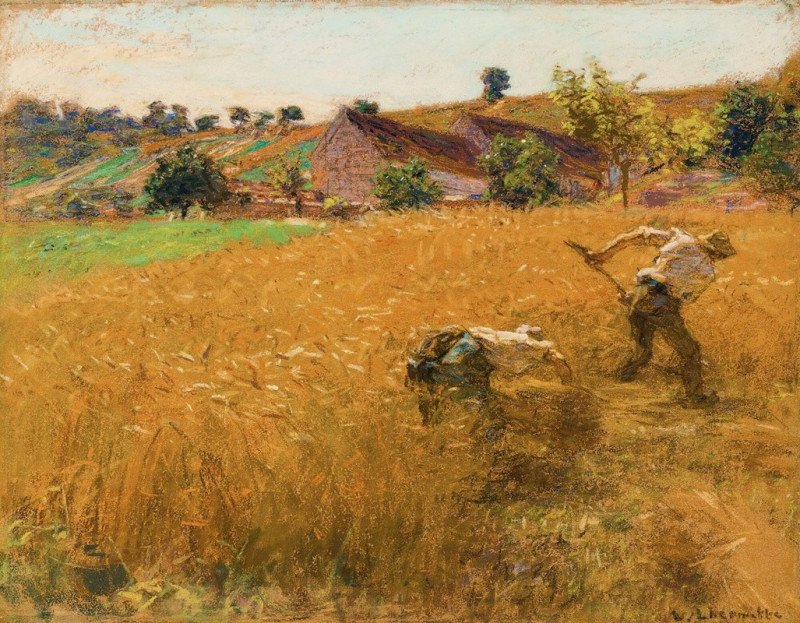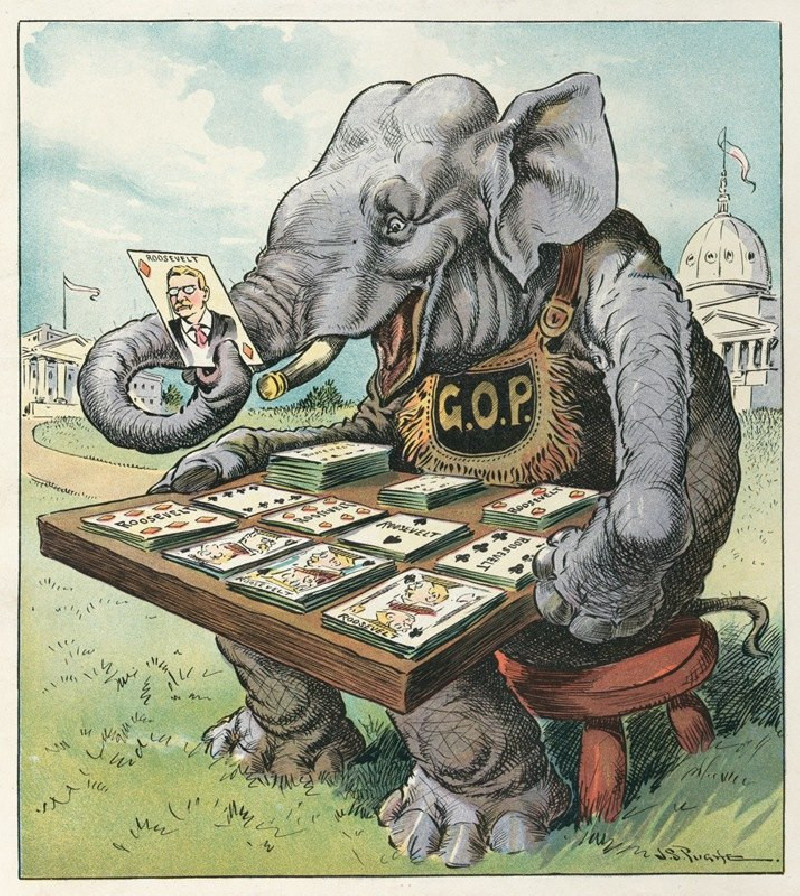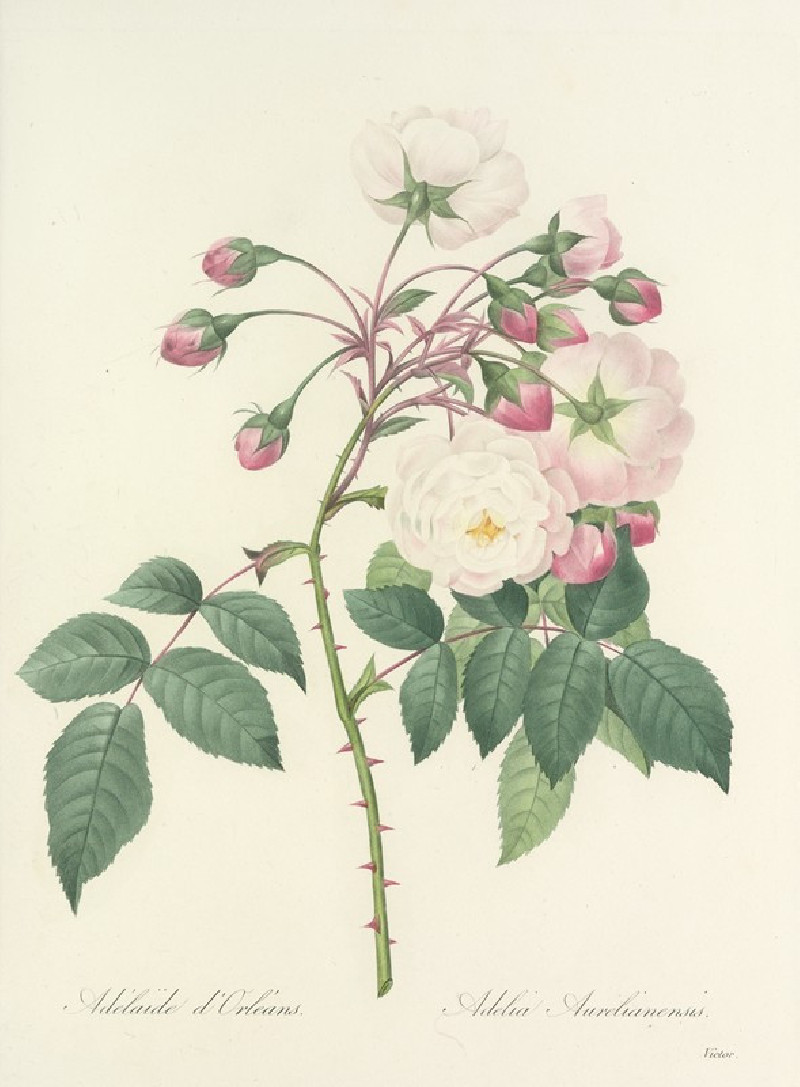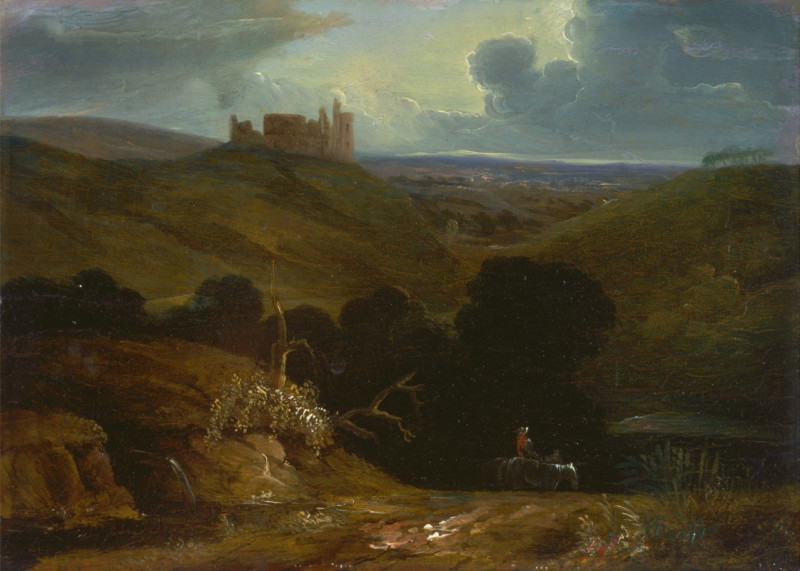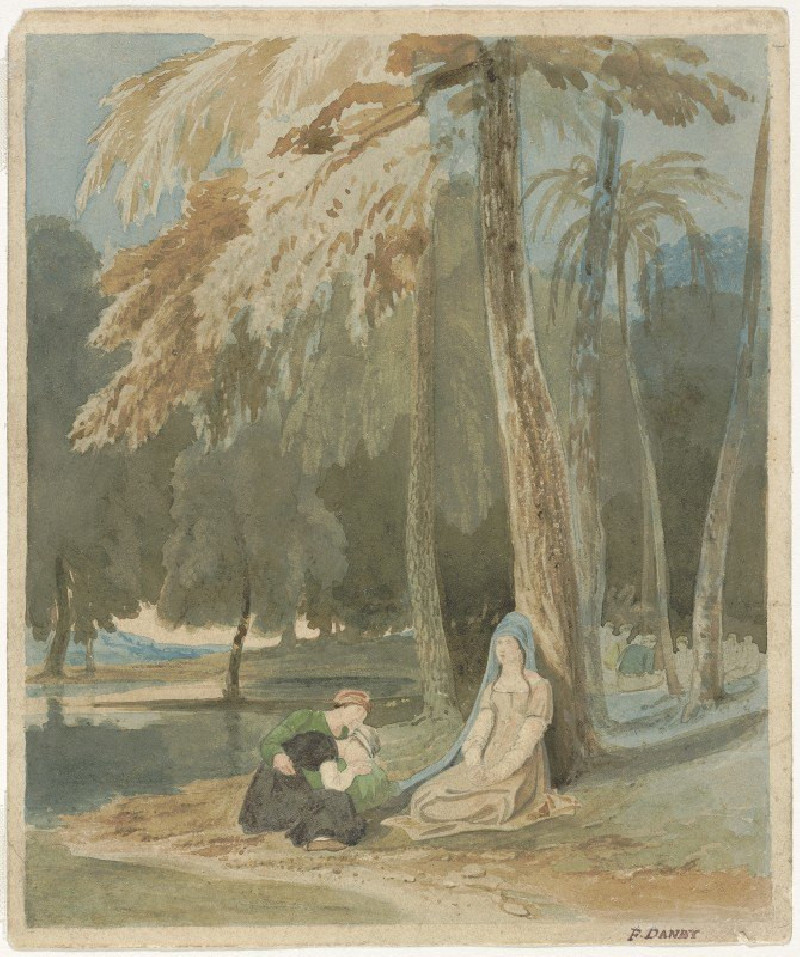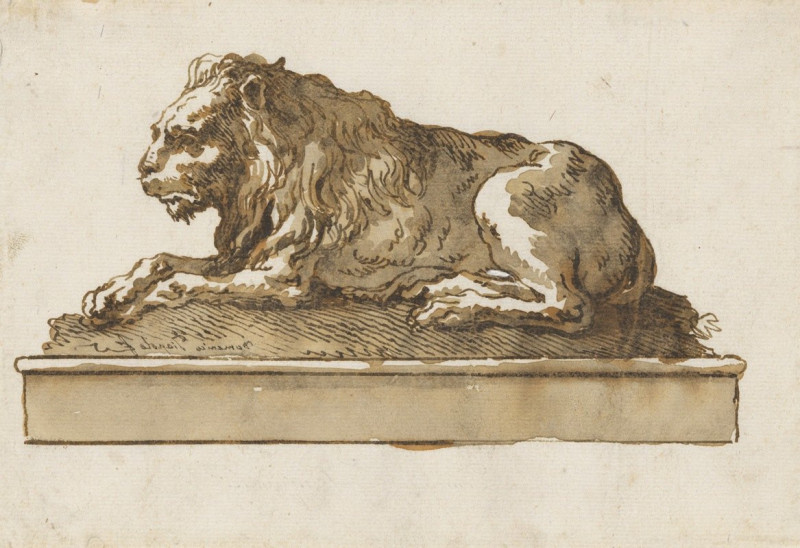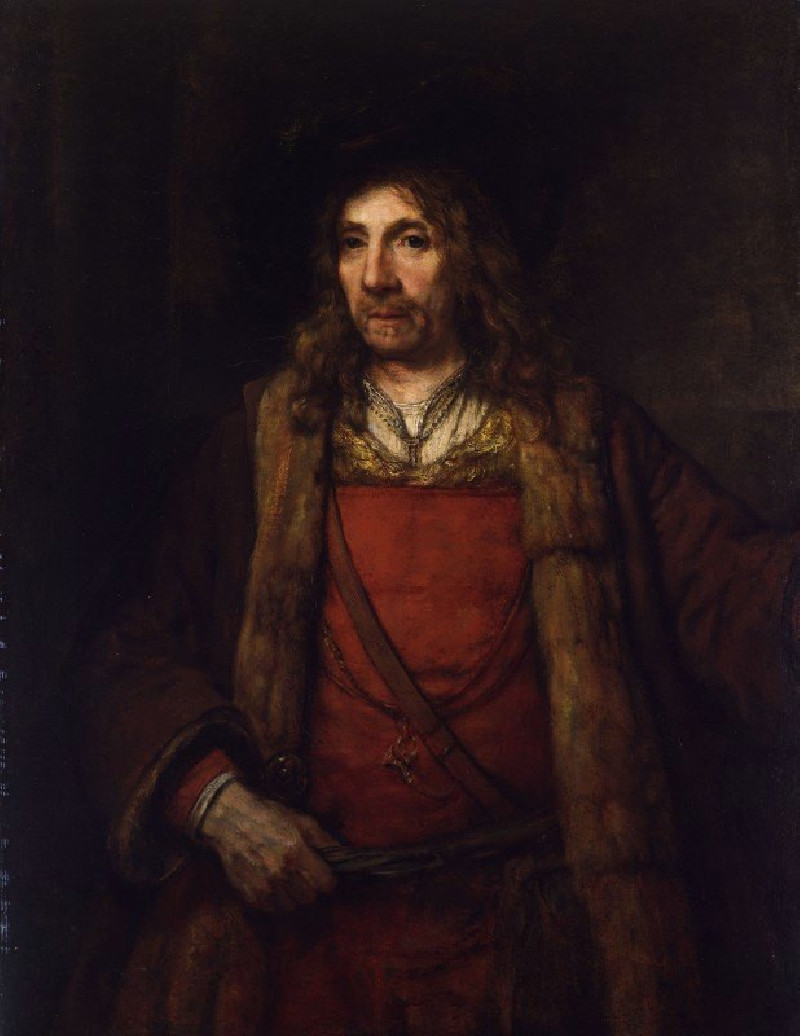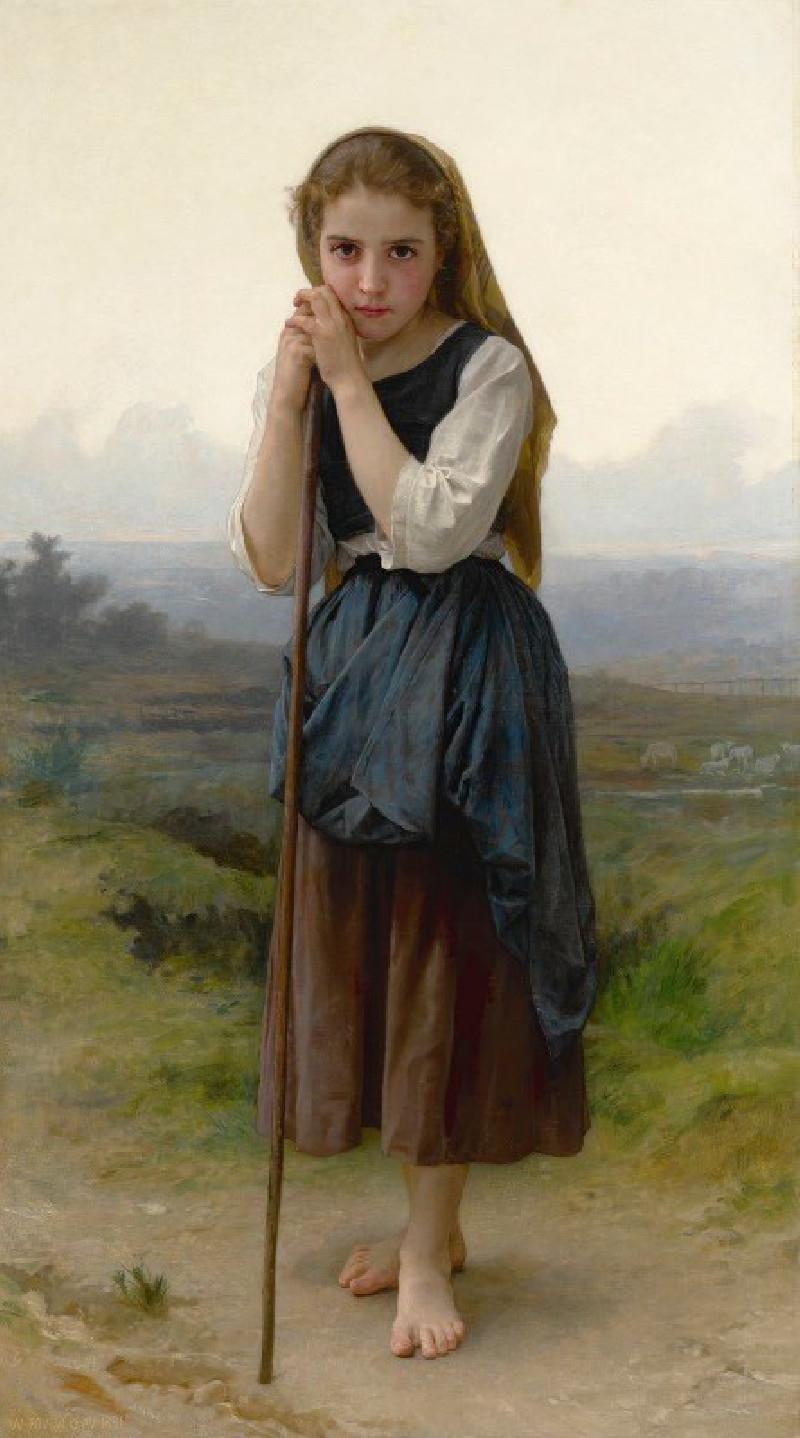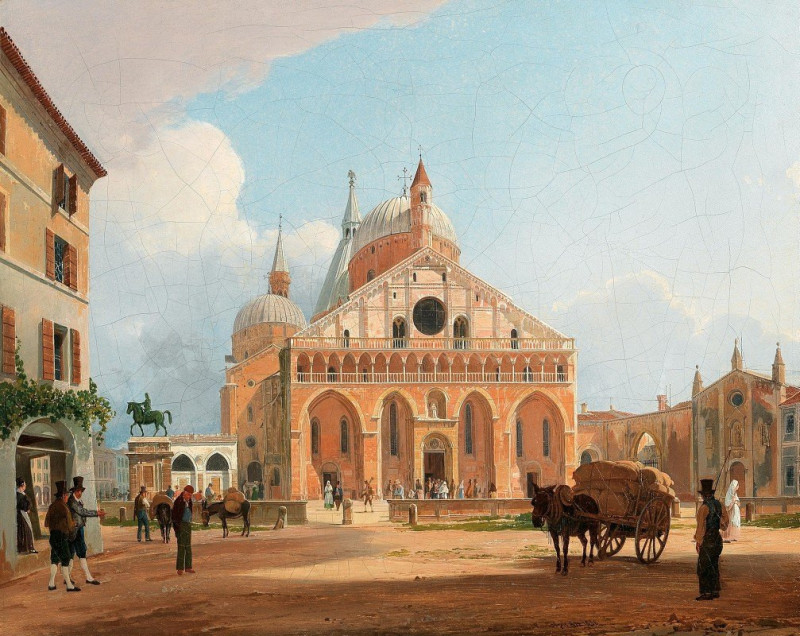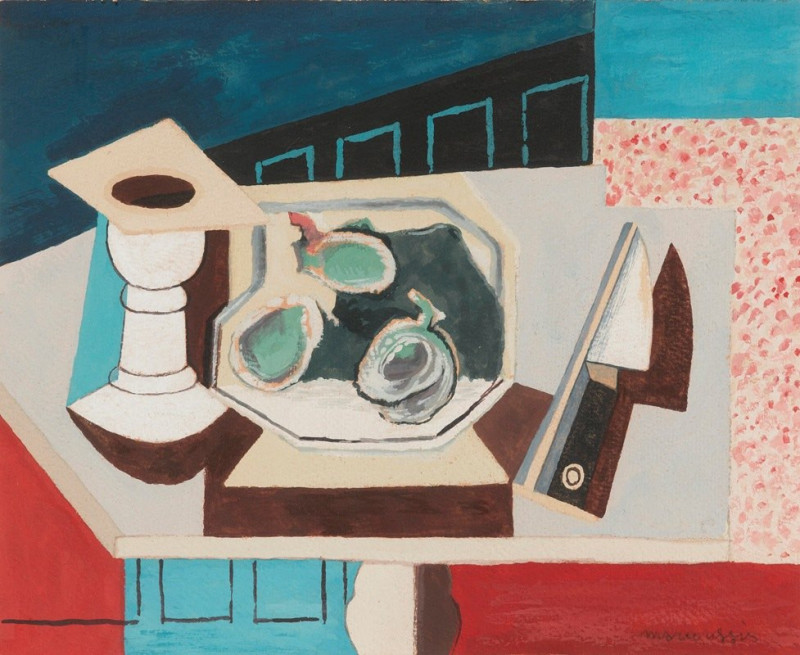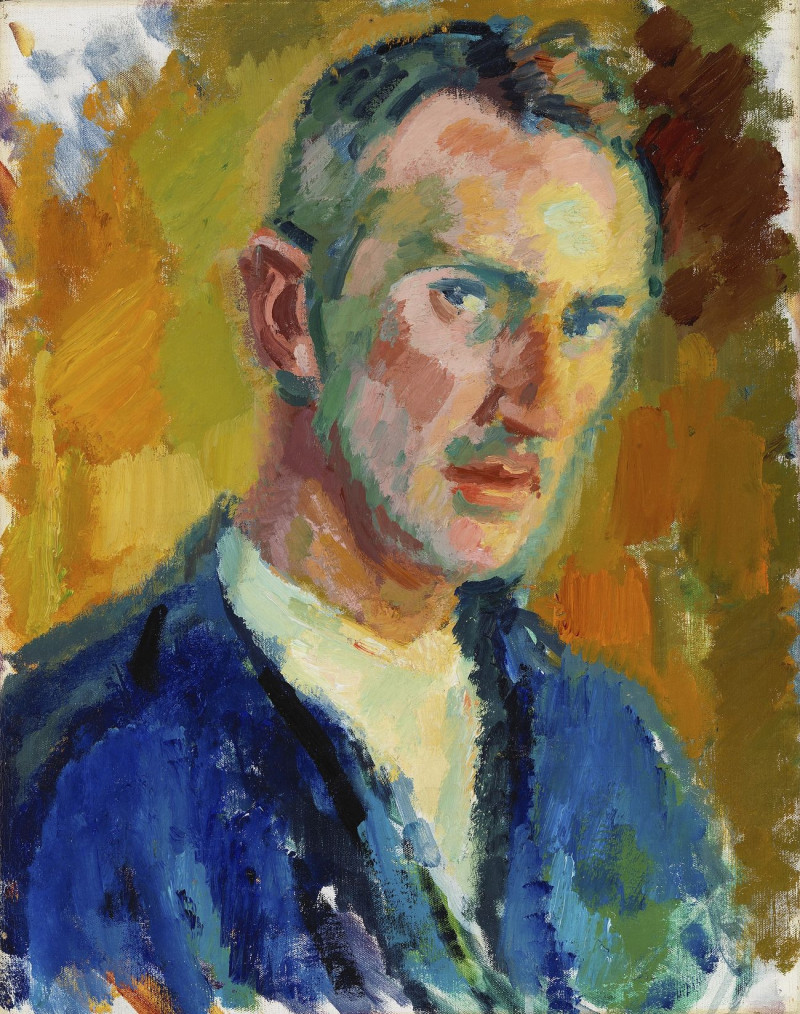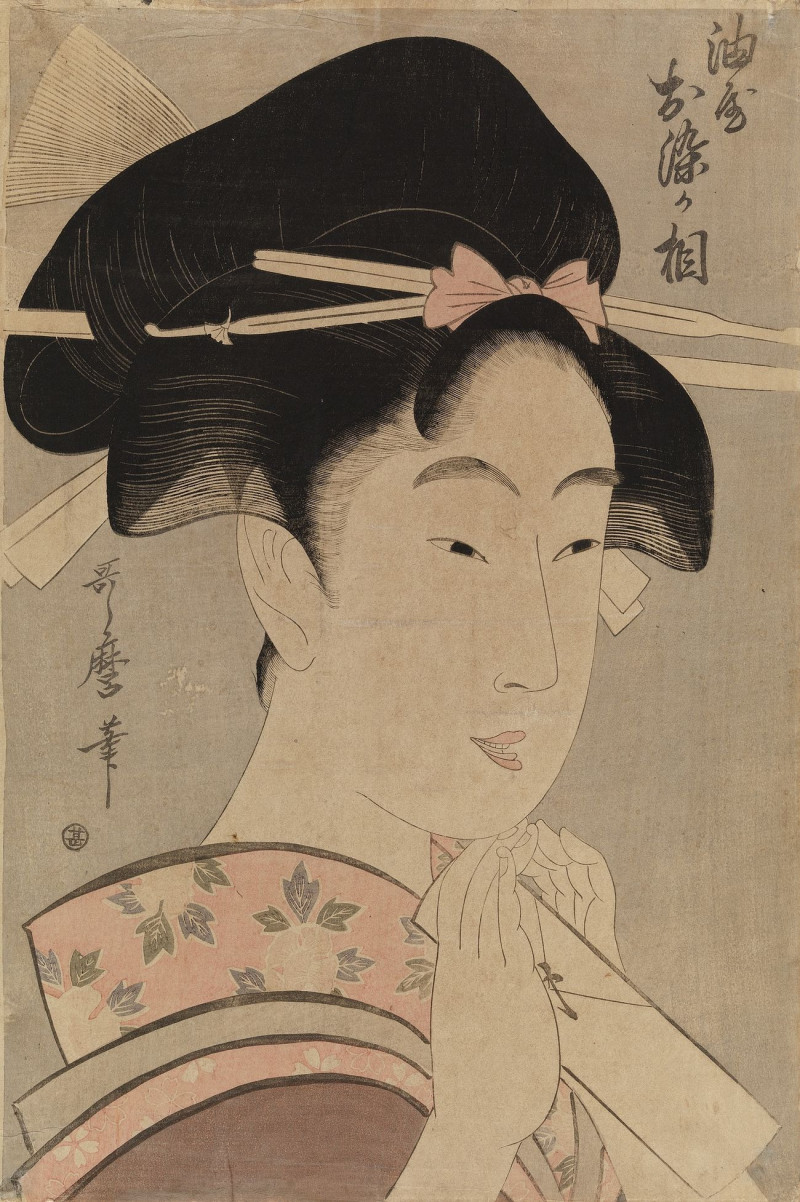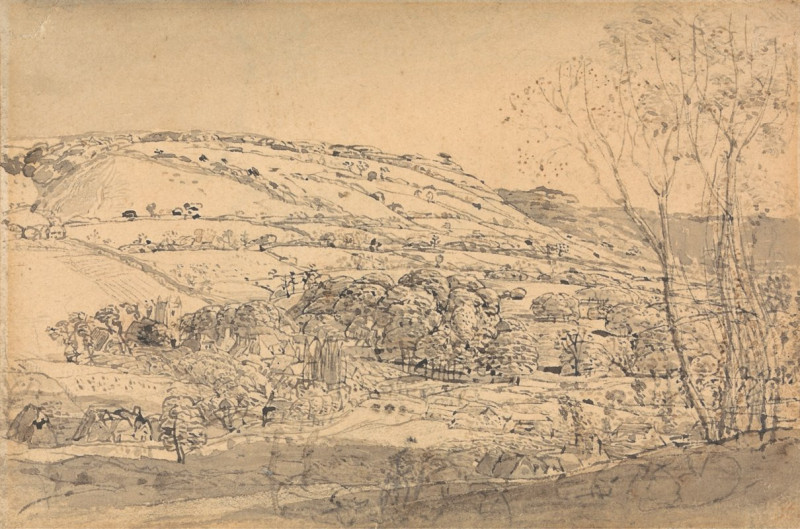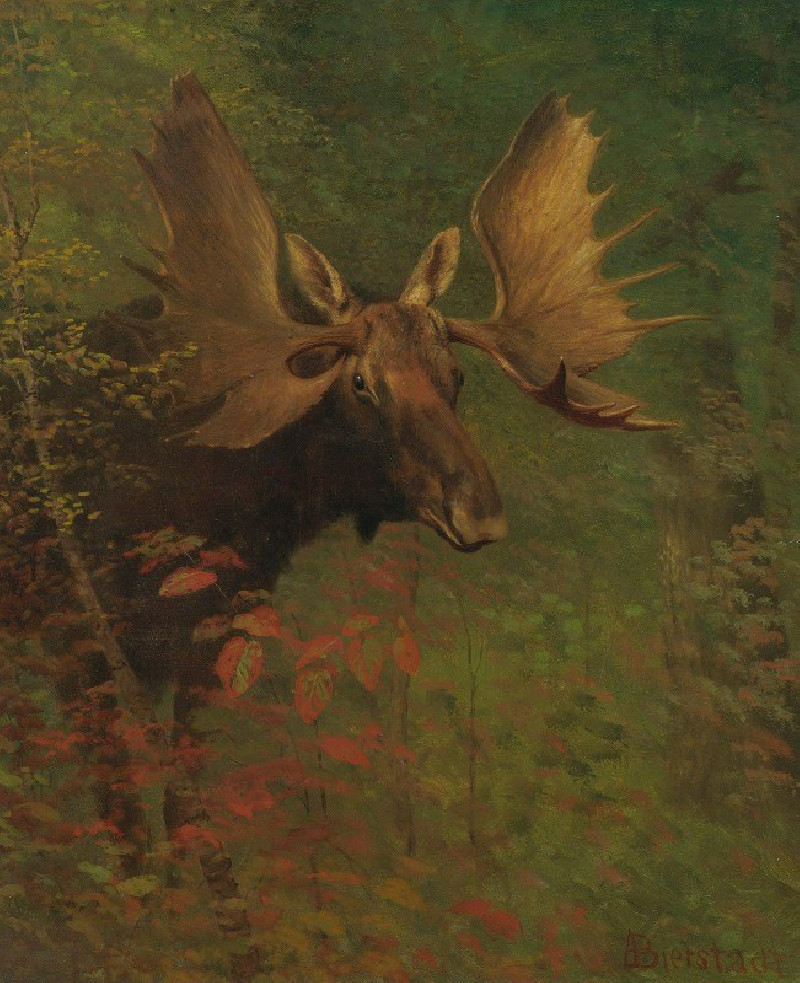Römische Ruinen (ca. 1850)
Technique: Giclée quality print
Recommended by our customers
More about this artwork
Adalbert Stifter’s evocative painting "Römische Ruinen" (Roman Ruins), painted around 1850, offers a haunting and atmospherically rich glimpse into the remnants of ancient Rome. This melancholic landscape features the decaying grandeur of once-majestic architectural structures. The ruins dominate the composition, their forms both broken and enduring, standing as silent witnesses to the passage of time.The artwork is cloaked in a subdued palette, where dark earthy tones and shadows mingle with the soft, diffused light that filters through the clouds above. This interplay of light and shadow not only heightens the dramatic effect of the scene but also emphasizes the textural contrasts of the crumbling stonework and the enduring solidity of the ruins.Stifter’s brushwork is loose yet intentional, capturing the rough surfaces of ancient stones and the ethereal quality of the sky. The painting's mood is reflective and somber, inviting the viewer to contemplate the transient nature of human endeavors contrasted with the timeless spirit of nature and history.
Delivery
Returns
Adalbert Stifter (1805–1868) was an Austrian writer, poet, painter and pedagogue. Born in Oberplan, Bohemia (now Horní Planá, Czech Republic), he was the eldest son of a wealthy linen weaver. Better known as a writer, Stifter was able to convey vivid and engaging landscapes in both his writing and painting. At the end of his life, exhausted by physical and mental illnesses, the artist died of suicide.

